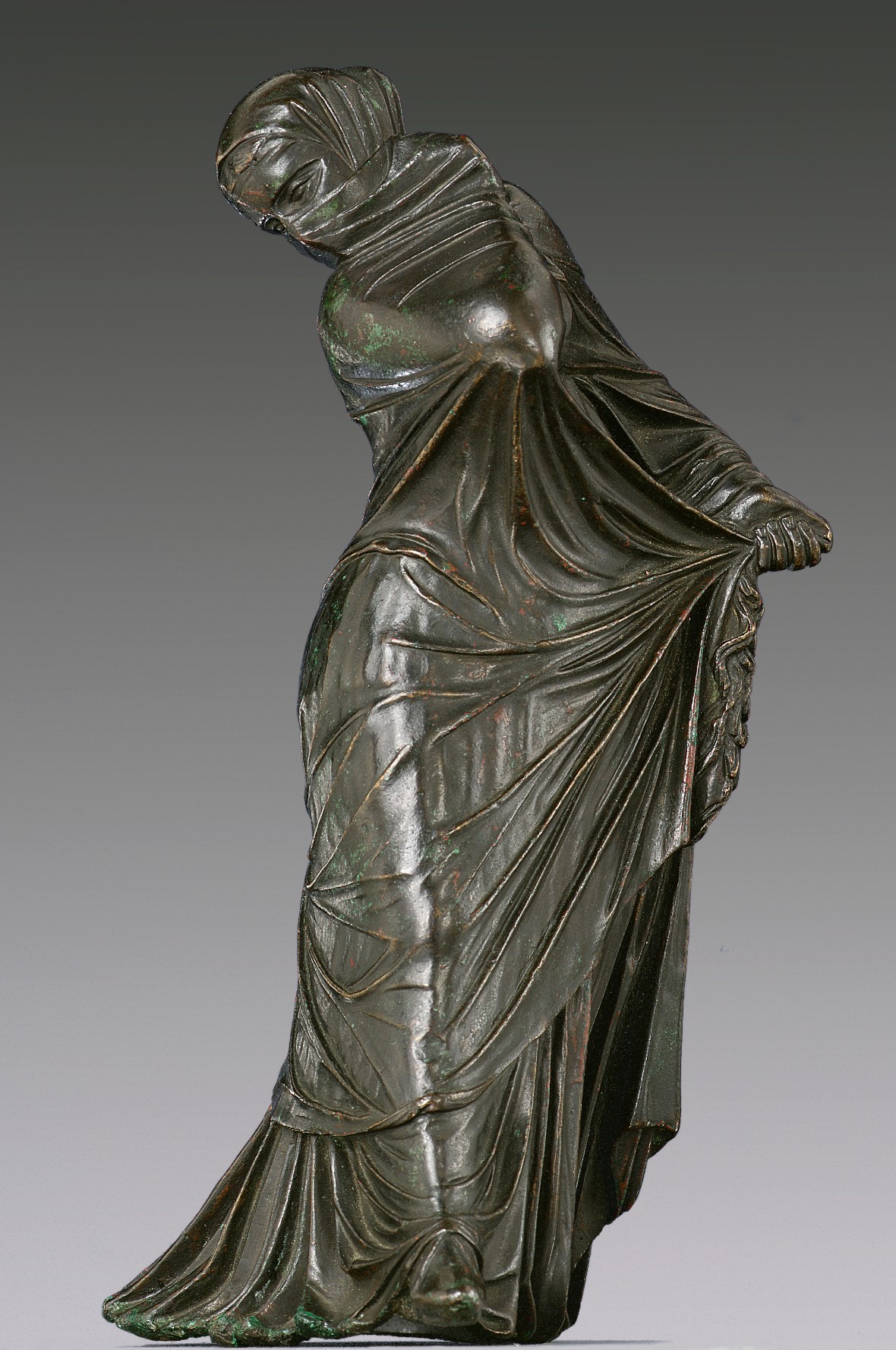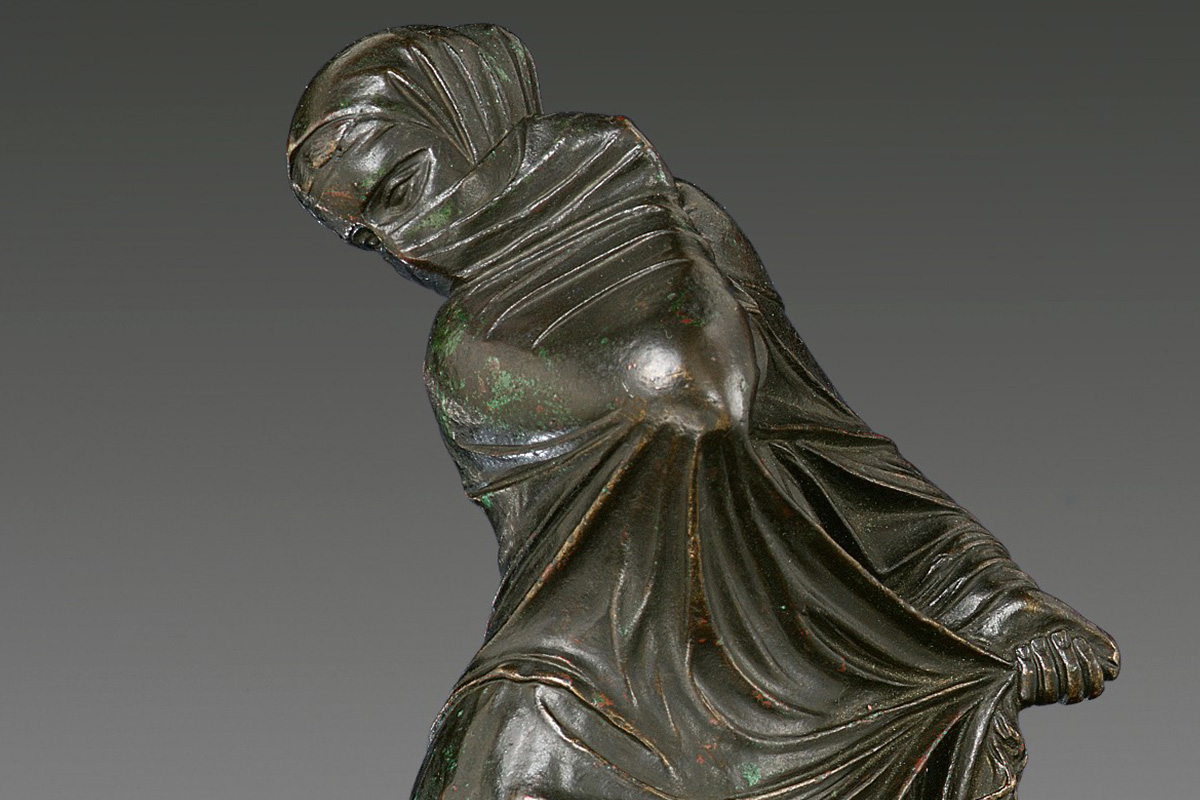Original Location:
- Said to be from Alexandria (Thompson 1950, p. 379).
- 3rd–2nd century BCE
Permanent Location:
- Metropolitan Museum of Arts, New York
- Gallery 163
The Medium:
- Bronze
My Background Story Related to Bronze Casting
In 2009, I was working in media in French language. At the time I did a story about a MET exhibit called “Cast in Bronze: French Sculpture from renaissance to revolution”. I had the opportunity to interview the curator at the time, late James Draper. He was not only art museum curator. He was also decorated chevalier Order of Arts and Letters, a prestigious recognition from the government of France.
This meeting with the curator sparked my interest in bronze casting.
More recently as I read and learned more about Greek bronze which is a fascinating topic of art history. Listening to different volunteer tour guides at the MET added to my knowledge.
On Friday February 24th, a MET volunteer guide enriched my knowledge about this piece: the Bronze statuette of a veiled and masked dancer. Another rare surviving Greek bronze thought to be from Alexandria, Egypt.
She explained the process of bronze casting and how it is still a mystery today on how the Ancient Greeks did it. Back then, people were using firewood. There were no other known means to reach the much higher temperatures. Very high temperatures are needed to molten the alloys to make bronze. The first known bronze sculpture dates back to 2500 BCE but it’s still not easy to accurately date. There is a possibility they could be much older.
Bronze casting is a process of pouring molten bronze into a hallow mold to create a positive of an object. It requires very high temperature for a longer period of time (24 hours). Most bronze alloys contain about 90% copper. The remaining 10% may be a mix of tin, aluminum, nickel, or zinc. Because it has a lower melting point than pure copper, it will stay liquid longer when filling a mold.
The average melting point of bronze is between 1790-1900 degrees Fahrenheit (or 976-1037°C). If the heat is uneven the results will create a lace like bronze material. To create a smooth and perfect finish for a sculpture it is incredibly difficult even with today’s technology. I could not find complete information on the actual ancient technique they used. If anyone has sources to share please do so.
For larger size sculpture, the wax cast technique was also used.
The skill required to attach and polish the different sections is recognized as an achievement. Not much else is known on how Ancient Greeks were able to molten bronze at an even temperature if they only had access to firewood.

Takeaways
The more I learn about Ancient Greeks, Mayans, Egyptians the more it seems clear that they had advanced knowledge. They had access to technologies we can’t replicate today with our modern tools.
I remember hearing one of my art teachers (fun fact, who is actually Greek) tell me a story about prehistoric arrow heads. You can find them today in different locations. Some arrow heads were found to have sharpness that can't be replicated with modern tools. I have yet to find more studies on this topic.
This reminds me of Zhang Gualao, Chinese people might be more familiar with him. In the book Zhuan Falun it says:
"Zhang Guolao, one of the eight deities, rode backward on his donkey. Few people know why he rode backward on his donkey. He discovered that going forward is moving backward, so he rode the donkey the other way around."
Intention
()
I think Zhang Gualao was quite wise and ahead of his time.
- Link to the talk James Draper held at the MET https://youtu.be/Y3GN6CgyZyI
- And the story I worked on (in French): https://youtu.be/fBb1lYNE2aI
- Getty Museum's Introduction to bronze sculpture of the Hellenistic world
More reading:
- Mongol Empire: Cultivating Artistic Renaissance Across Realms
- Rosa Bonheur: Artistic Autonomy Through Realistic Painting
- Unveiling Masterpieces: NYC’s Exuberant Realism!
- Unlocking the Enigma of a Viking Sword: The Legacy of Hartolfr
- How an Early Childhood Museum Experience Shaped My Life: Exploring the Egyptian Museum of Cairo



No Comments.